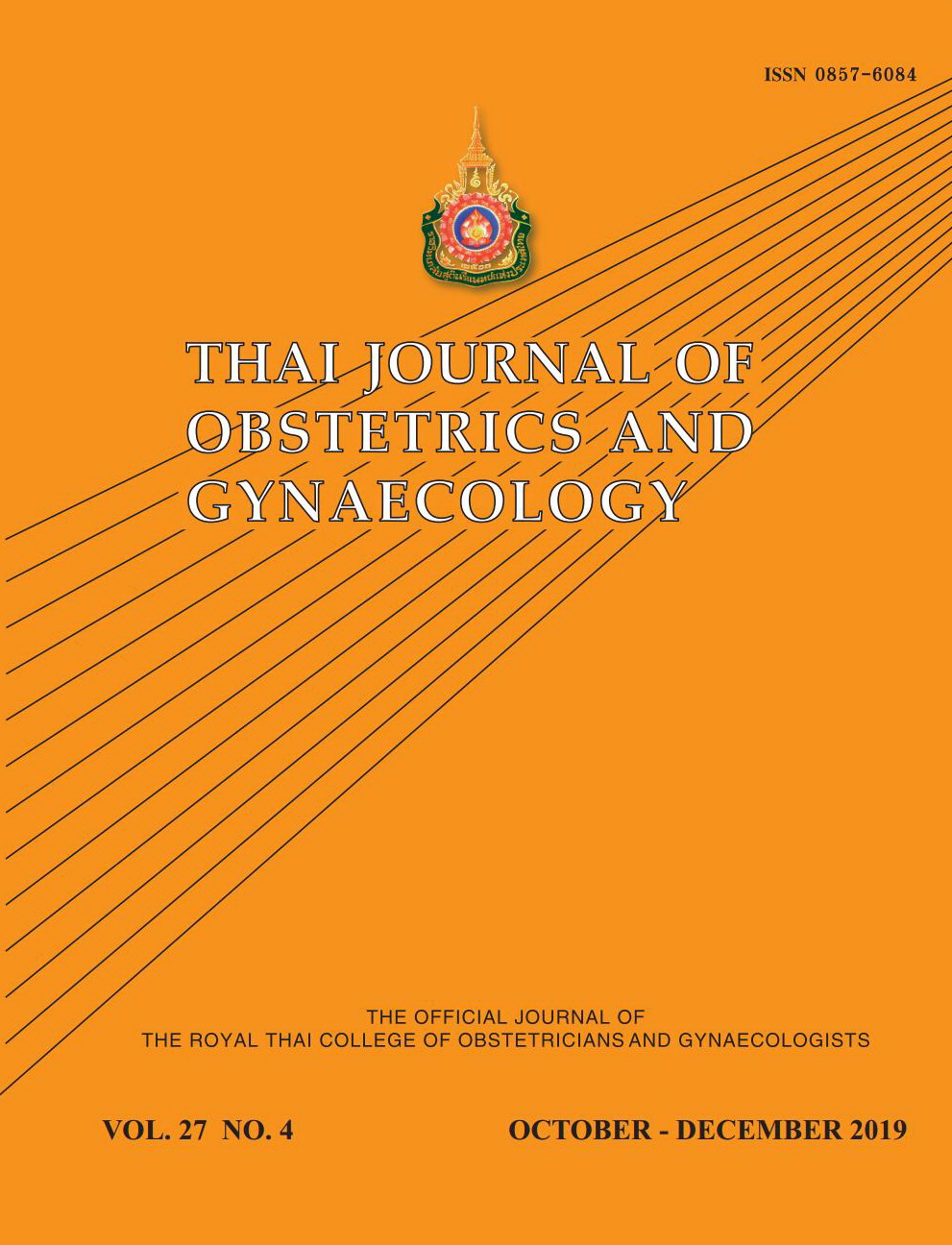Respiratory Distress in Early Premature Newborns with Suboptimal Antenatal Steroid
Main Article Content
Abstract
Objectives: To study the effects between a complete course and an incomplete course of dexamethasone on the incidence of respiratory distress syndrome in newborn infants aged below 34 weeks.
Materials and Methods: A retrospective cohort study was conducted on 118 pregnant patients at 24-33+6 weeks of gestation. The sample was divided into two groups: the first group consisting of 63 pregnant patients who received an incomplete course of dexamethasone (< 4 doses) prior to delivery and the second group comprising 55 pregnant patients who received a complete course of dexamethasone prior to delivery (within 14 days after the first dose). Data were collected from electronic medical records to obtain information about the baseline characteristics of the sample, the number of doses of dexamethasone received, the incidence of respiratory distress syndrome (RDS), intraventricular hemorrhage (IVH), necrotizing enterocolitis (NEC), early-onset neonatal sepsis (EOS), and neonatal death.
Results: The rates of RDS and neonatal death amongst pregnant patients who received a complete course of dexamethasone significantly decreased from 74.6% to 50.9% (adjusted odds ratio (AORs) 0.37; 95% confidence interval (CI) 0.17-0.84) and from 12.7% to 1.8% (AORs 0.10; 95%CI 0.01-0.98), respectively, when compared with pregnant patients who received an incomplete course of dexamethasone. Alternatively, there were no statistically significant differences between the two groups in terms of the rates of IVH, NEC, patent ductus arteriosus (PDA), NICU admission within the first 7 days of birth, and surfactant requirement. Meanwhile, the incidence rate of EOS increased from 19% to 26.5% (AORs 3.18; 95%CI 1.13-8.97)
Conclusion: The administration of a complete course of dexamethasone to pregnant patients with gestational age less than 34 weeks is conclusive to a decrease in the incidence of RDS and neonatal death, while contributing to an increased incidence of EOS.
Article Details
References
2. Tielsch JM. Global Incidence of Preterm Birth. Nestle Nutr Inst Workshop Ser 2015;81:9-15.
3. The Royal Thai College of Obstetricians and Gynaecologists. Clinical Practice Guideline. Second edition. Bangkok: The Royal Thai College of Obstetricians and Gynecologists; 2015.
4. Roberts D, Brown J, Medley N, Dalziel SR. Antenatal corticosteroids for accelerating fetal lung maturation for women at risk of preterm birth. Cochrane Database Syst Rev 2017;3:1-4.
5. Committee on Obstetric Practice. Antenatal corticosteroid therapy for fetal maturation. Obstet Gynecol 2006;677:1-8.
6. Crowley PA. Antenatal corticosteroid therapy: A meta-analysis of the randomized trials, 1972 to 1994. Am J Obstet Gynecol 1995;173:322–35.
7. Clarissa B, Ronald JW. Antenatal corticosteroids in the management of preterm birth: Are we back where we started? Obstet Gynecol Clin North Am 2012;39:47-63.
8. Crowther CA, Doyle LW, Haslam RR, Hiller JE, Harding JE, Robinson JS. Outcome at 2 years of age after repeat doses of antenatal corticosteroids. N Engl J Med 2007;357:1179-89.
9. Wapner RJ, Sorokin Y, Mele L, Johnson F, Dudley DJ, Spong CY, et al. Long-term outcomes after repeat doses of antenatal corticosteroids. N Engl J Med 2007; 357:1190-8.
10. Asztalos EV, Murphy KE, Hannah ME, Willan AR, Matthews SG, Ohlsson A, et al. Multiple courses of antenatal corticosteroids for preterm birth study: 2-year outcomes. Pediatrics 2010;126:e1045-55.
11. Peltoniemi OM, Kari MA, Lano A, Yliherva A, Puosi R, Lehtonen L, et al. Two-year follow of a randomised trial with repeated antenatal betamethasone. Arch Dis Child Fetal Neonatal Ed 2009;94:F402-6.
12. Kumar TR, Suresh PM, Prasath SVA. Prevalence of antenatal steroids coverage in preterm labor and its influence on neonatal respiratory morbidity and mortality in Kanyakumari district. Int J Sci Stud 2017;5:197-9.
13. Chen CY, Wang KG, Chang TY, Chen CP, Loo JH. Effects of antenatal betamethasone and dexamethasone in preterm neonates. Taiwanese J Obstet Gynaecol 2005;44:247–51.
14. Elimian A, Figueroa R, Spitzer AR, Ogburn PL, Wiencek V, Quirk JG. Antenatal corticosteroids: are incomplete courses beneficial? Obstet Gynecol 2003;102:352.

